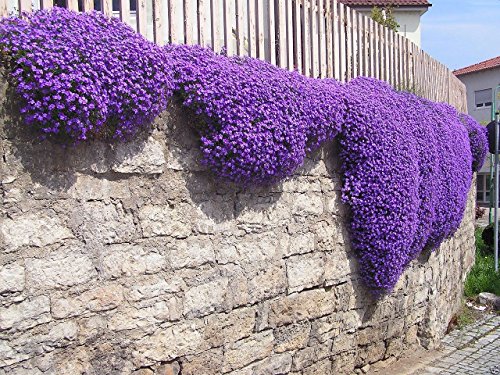If you’re looking for the perfect ground cover for a hilly terrain, there are several factors you should consider before making a purchase. Not all ground covers are created equal, and some may thrive better than others depending on the specific needs of your property. One important factor to keep in mind is the type of soil on your hill. Some ground covers flourish better in rocky soil, while others may require a looser, more fertile ground. Other important factors to consider include the amount of sunlight the area receives, the climate of the region, and the amount of foot traffic the area will need to withstand.
Choosing the right ground cover for your hill can be a daunting task, but it’s an essential component to maintaining a healthy and beautiful landscape. Some questions you should ask yourself include: What is the slope angle of your hill? Will your ground cover need to be erosion-resistant? Are you looking for a low-maintenance or more ornamental option? Additionally, consider if you are planting in an area that is prone to wildfires. Some ground covers, such as succulents, are fire-resistant which could potentially help protect your property. By taking these factors into account, you’ll be able to make the best choice for your unique hillside.
10 Best Ground Cover For Hills
| # | Product Image | Product Name | Product Notes | Check Price |
|---|---|---|---|---|
|
1
|
The product is ideal for ground cover with heat and drought tolerance, as well as succulent and stonecrop qualities.
|
|
||
|
2
|
This product is ideal for pasture, hay, green manure, cover crop, and wildlife forage.
|
|
||
|
3
|
This product is ideal for ground cover and adding nutrients to soil, reducing need for fertilizer and mowing.
|
|
||
|
4
|
This product is ideal for erosion control, ground cover, lawn alternative, and providing pasture and forage.
|
|
||
|
5
|
It is ideal for use as a flowering, ground cover plant in outdoor areas with full sun exposure.
|
|
||
|
6
|
This product is ideal for improving soil and growing pasture and hay.
|
|
||
|
7
|
White Dutch Clover Grass Seed is ideal for creating a lush, durable, and low-maintenance lawn.
|
|
||
|
8
|
Ideal for those seeking a low-growing, maintenance-free lawn alternative with excellent ground coverage.
|
|
||
|
9
|
The product is ideal for ground cover that can tolerate heat and drought.
|
|
||
|
10
|
This product is ideal for those looking for a perennial, deer-resistant purple flower seed option.
|
|
1. Heat-Tolerant Sedum Stonecrop Ground Cover – 5000 Seeds.
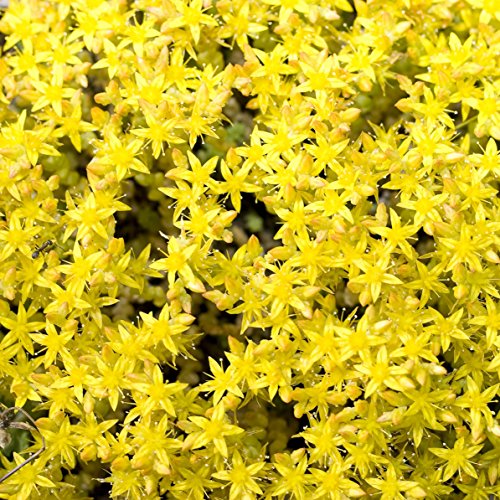
Sedum acre, a low-growing perennial ground cover plant, is a great addition to any garden located in USDA zones 4 – 8. This drought-tolerant succulent is perfect for those who want a low-maintenance and beautiful option for their ground covers. With its bright yellow flowers, Sedum acre is a stunning addition to any lawn or garden.
This plant is commonly known as goldmoss stonecrop, goldmoss sedum, biting stonecrop, or wallpepper. It is a great option for those who want a unique and beautiful ground cover with a lot of character.
Unlike some other ground covers, Sedum acre is not considered to be aggressive. It spreads slowly and has fairly shallow roots, which makes it easy to remove if it grows in an unwanted area.
If you are looking to plant this beautiful heirloom, non-GMO perennial ground cover, we recommend sowing it at approximately 5000 seeds to cover 100 square feet. This will ensure that your ground cover is thick and full, providing the best possible coverage for your lawn or garden.
2. Crimson Clover: Versatile Legume Seed For All
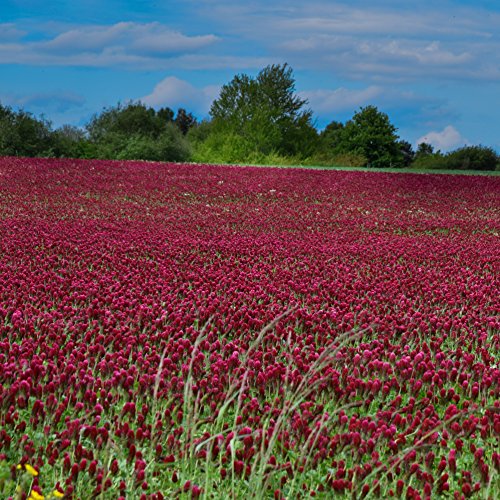
Crimson clover is a versatile plant that offers a high protein supply for whitetail deer and other wildlife. It is an excellent source of nutrients for growth and can also be used for hay production or as a cover crop. In livestock pastures, Crimson clover can be planted for forage and hay purposes. This plant is a winter annual and can be grown from bulk clover seeds from the Gulf Coast region to Southern Ohio and across the West Coast.
Crimson clover is tolerant of medium soil acidity and can grow readily on both sandy and clay type soils. This winter annual forage thrives in a mixture with grasses, providing excellent winter grazing and making good hay. It is high in nutritive value when harvested for forage in the pre-bloom stage. The flower heads are long, crimson, and showy, adding a beautiful touch to any landscape.
Crimson clover seeds and annual ryegrass make an excellent cover crop mixture for improving the texture, organic matter, and tilth of soil. These heirloom seeds are non-GMO and open-pollinated, ensuring that they are of high quality. The crimson seed is coated and inoculated for optimum germination and growth, giving you the best possible outcome.
The Dixie reseeding crimson clover is an essential component of many of Pennington's Rackmaster Wildlife Seed mixtures. It is a high-quality, productive, and palatable cool season forage for deer. This plant starts fast, withstands heavy continuous grazing, and produces a consistent, heavy seed crop with good reseeding potential.
To sow the seeds, it is recommended to use 1/2 – 3/4 lb per 1,000 square feet or 20 to 30 lbs per acre. Rest assured that these quality seeds will provide a successful growth outcome. Crimson clover is a valuable addition to any garden or landscape, providing both beauty and functionality while also supporting the local wildlife.
3. Outsidepride Perennial Green Miniclover Lawn Clover & Ground Cover Seeds – 1/4 Lb
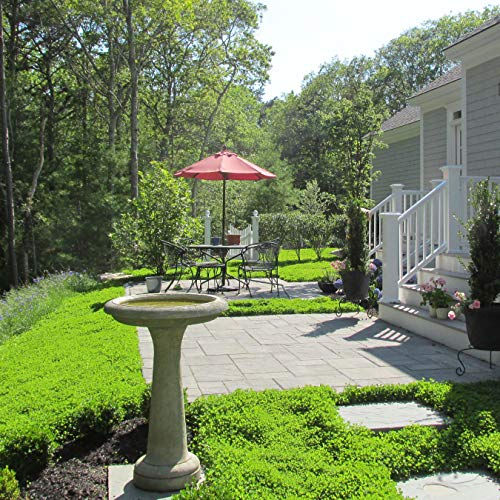
Miniclover is a white clover that can serve as a natural fertilizer for lawns. This perennial plant grows up to 4-6 inches tall after being mowed a few times. It is a trifolium repens seed that can be used as a ground cover or a lawn alternative. Compared to other white clovers used for lawns, Miniclover's leaf heads are only 1/3rd to 1/2 as large, and it only grows half as tall as white Dutch clover.
Miniclover is an ideal choice for those who prefer a no-mow lawn. This micro type clover is a better option than other white clovers for lawns. It is also popular among those who prefer a ground cover as an alternative to a traditional lawn. This seed can be grown in USDA Zones 3 – 10 as a perennial.
To plant Miniclover, it is recommended to sow 1-2 pounds of clover seeds per 1,000 SF. Its ability to fix nitrogen from the air makes it an excellent natural fertilizer for lawns. With its low maintenance and aesthetic appeal, Miniclover is an excellent choice for those looking for a sustainable and eco-friendly alternative to traditional lawns.
4. Dutch Clover Seed: Versatile Erosion Control Solution
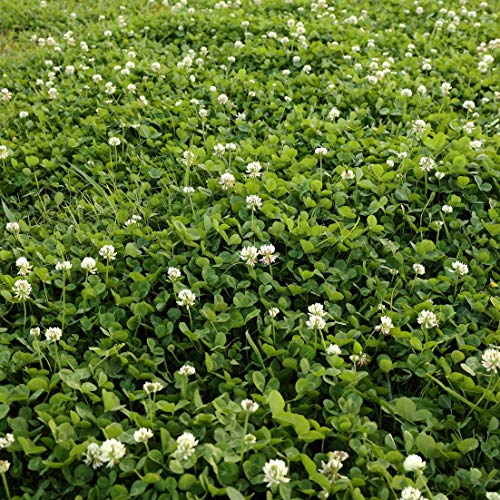
White Dutch Clover seed is a versatile and hardy perennial that serves a variety of purposes such as erosion control, food plots, green manure crops, pasture mixtures, ground cover, and many more. It can be grown across the country in USDA Zones 3 – 10, making it an ideal choice for a wide variety of climates.
One of the key benefits of white clover is its ability to boost soil nitrogen levels. White clover has the unique ability to take nitrogen from the air and fix it in the soil, which helps to promote healthy plant growth and overall soil health. Additionally, white clover can also be used as a lawn alternative due to its hardiness and ability to withstand foot traffic.
To plant white Dutch Clover, it is recommended to broadcast the seed on prepared soil and lightly rake it in. Continuously keep the clover seed moist until germination occurs, which typically takes 14 days with temperatures ranging between 65 – 70F. The seeding rate for white Dutch Clover is 1/4 lb – 1/2 lb per 1,000 square feet or 8 to 10 lbs per acre, which makes it an affordable and efficient option for large-scale planting projects.
5. Full Sun Drift Rose – Blooming Ground Cover
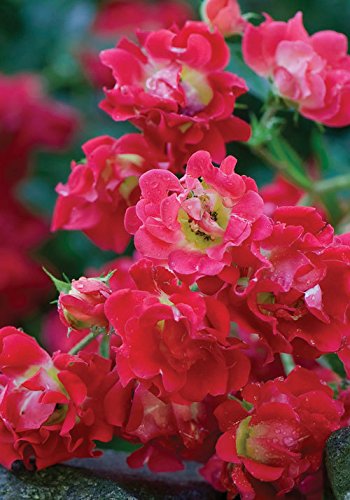
The Red Drift Roses are a stunning addition to any garden or landscape. With their vibrant cascading appearance, they are sure to catch the eye whether planted in containers or as ground covers. These roses bloom throughout the spring and summer season, providing exceptional color and beauty to your outdoor space.
With a mature height of 1.5 feet and a spread of 2.5 feet, these roses are easy to maintain. They are often used as accents, borders, mass plantings, and as foundational growth. Butterflies, birds, and bees are all attracted to the Red Drift Rose, making it a great way to invite wildlife into your garden.
When it comes to pruning, these roses do not require it, although they do respond well to it. If you do choose to prune, perform a hard prune in the early spring after the threat of a hard freeze has passed, but before new growth begins.
The Red Drift Roses are suitable for USDA zones 4-11, and like all roses, they prefer full sun, a rich but moist well-draining soil, and regular watering. It is important to water from the base of the plant and to place 2 to 3 inches of mulch around the base of the shrub to help retain moisture.
The Red Drift Roses ship as a 2-gallon potted plant with soil from the Alabama Gulfcoast. Unfortunately, they are not available to ship to Hawaii or Alaska. While there is no guarantee that your rose plant will be in bloom when it is received, you can be assured that it will provide eye-catching color and beauty to your outdoor space for years to come.
6. Outsidepride Red Clover Legume Seed For Pasture, Hay, & Soil Improvement – 2 Lbs
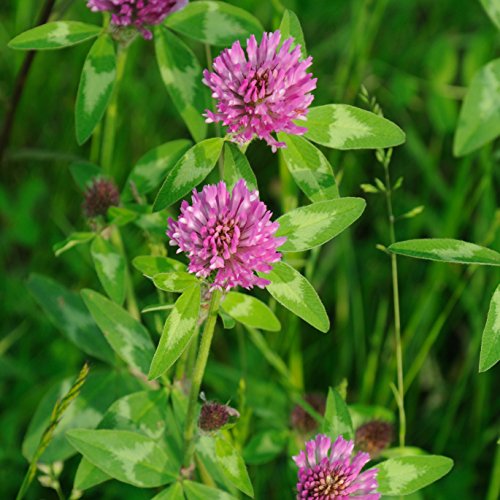
Red clover seeds are a highly valuable forage legume that are cultivated throughout the U.S. in temperate regions. This type of clover is now being increasingly grown in the Deep South as a winter annual, due to its resilience in a variety of conditions. It is also widely grown from bulk clover seeds in the Pacific Northwest and other regions across the country. As a short-lived perennial clover, red clover typically lasts between 3-5 years; however, it often persists beyond this due to self-seeding.
There are multiple uses for red clover, including as cover crops, food plots, pasture mixtures, hay, silage, and other applications, making it the most commonly used clover today. The plant is adaptable to a wide range of climatic conditions, soil types, fertility levels, use patterns, and management, making it an easy crop to establish. Red clover seeds establish vigorously and is a great clover to fixate nitrogen out of the atmosphere and into the soil. Additionally, red clover is relatively easy to keep free of disease and pests, making it a popular choice for crop rotation programs.
Red clover is often grown alongside cool season grasses, but it can also be grown alone or with certain warm season perennial grasses. It can be used for pasture, hay, or silage, and is an excellent soil improvement crop. When grown in areas where it is well-adapted, the yield of red clover seed is usually higher than that of any other clover. It has a longer growing season than any other clover grown in the United States, and bumble bees are the main pollinator as it is extremely attractive to insects.
When planting red clover seeds, it is recommended to use 1/2 lb per 1,000 square feet or 8 to 16 lbs per acre. The ideal seeding depth is approximately 1/4 inch, but it is better to err on the side of being shallow rather than too deep. Ensuring good seed-soil contact helps ensure establishment. Most red clover is seeded in late winter to early spring in the northern and central parts of the red clover belt, while autumn plantings are preferred in the Lower South.
7. White Dutch Clover Grass Seed (1500 Sq Ft)
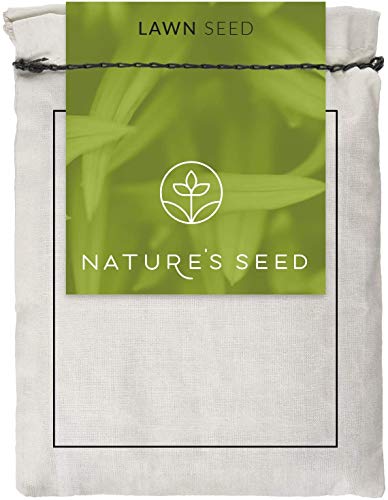
Looking for a low-cost, low-maintenance alternative to traditional turf lawns? Look no further than this high-quality clover seed, boasting 98% purity and absolutely no filler.
Not only will this clover provide a lush green coverage on bare spots, but it also adds nutrients back into your soil, making nearby grass healthier in the process.
Perfect for shady or problem areas of your yard, this clover requires no fertilizer and is incredibly easy to maintain. Say goodbye to the hassle of constant yard work and hello to a beautiful, eco-friendly lawn that practically takes care of itself.
8. Dwarf Dichondra – Year-Round Ground Cover
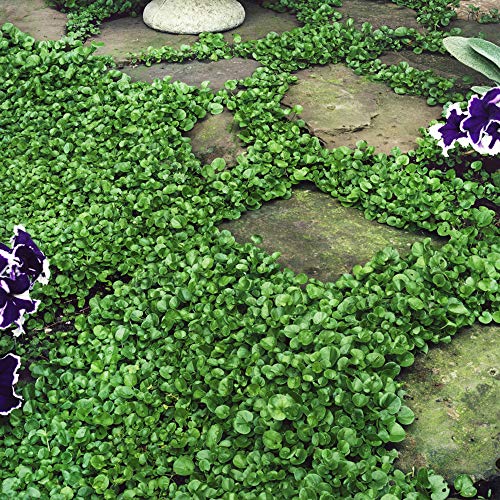
Dichondra repens is an excellent ground cover option that is simple to establish from seed. With a prostrate or creeping growth habit and circular leaves, it is considered a perennial in USDA Zones 7 – 11. Despite its preference for warmer climates, it can withstand winter temperatures as low as 20 – 25 degrees Fahrenheit while retaining its striking green color with only slight leaf browning.
This warm season fast-growing ground cover is perfect for those who want to avoid mowing as it never grows beyond 2-3 inches in height. The broad, almost circular leaves of dichondra, which resemble clover, can be mowed low to establish a thick, dense carpet look. Dichondra is also extremely versatile and can be used in many ground cover situations where other grasses may not grow as well. It has a bright green color and feels great underfoot.
Dichondra Repens is commonly referred to as Kidney Weed, Dichondra Pony Foot, or Lawn Leaf. It is perfect for landscaping areas with minimal maintenance requirements and does not need to be mowed. However, it can be mowed in lawn situations for an even, smooth finish. Dichondra Repens grows so easily from ground cover seeds that it can be used as a lawn alternative to create a Dichondra Repens lawn.
Many people choose dichondra as a lawn alternative, allowing them to mow it to their desired height. During the summer months, it is recommended to mow approximately every two weeks at a height of 1 1/2" – 2" for the nicest appearance. During the winter months, dichondra can be mowed as low as 3/4" while maintaining its beautiful green color.
To establish Dichondra Repens, plant 1 pound of seed per 500 square feet. These seeds are heirloom and non-GMO, allowing for a natural and sustainable ground cover option. Overall, Dichondra Repens is an easy-to-maintain, versatile, and beautiful ground cover that is perfect for anyone who desires a lush and green yard without the hassle of constant mowing.
9. Red Spreading Ground Cover: 5000 Heat-Tolerant Seeds
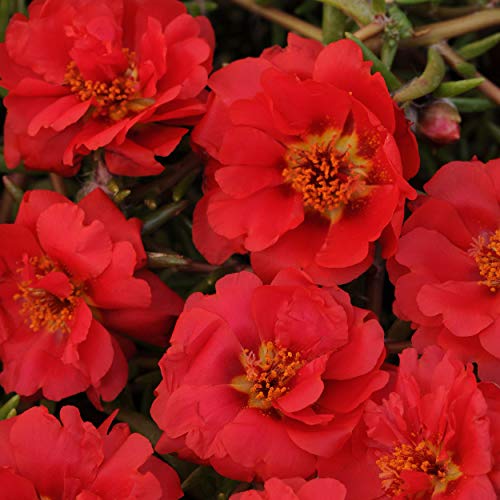
Portulaca grandiflora, commonly known as Moss Rose, is a beautiful and colorful ground cover plant that is easy to grow and maintain. Moss Rose is an annual plant that rewards gardeners with its vibrant display of colors all summer long. It is an excellent choice for edging the front of a sunny border or for growing in containers and baskets.
This particular red variety of Moss Rose produces stunning 1-inch, rose-like red blooms that continue to brighten up any garden all summer long. The blooms open during the day and close at night and on cloudy days. To grow Moss Rose, start the seeds indoors 6-8 weeks before the expected end of the frost season.
To plant the seeds, press them into the soil but do not cover them. Keep the seeds moist until germination, which usually occurs within 14 days at a temperature of 70-80F. Space the plants 12-15 inches apart and grow them in full sun and well-drained soil.
Moss Rose is a hardy plant that can withstand heat and drought. However, it performs best with an occasional deep watering. Trimming the plants during the summer will tidy their appearance and encourage blooming into the fall season.
A packet of approximately 1000 Moss Rose seeds can cover 20 square feet. To ensure successful germination, keep the soil slightly moist but not wet. This plant is a great addition to any garden due to its low maintenance and vibrant display of colors.
Best Ground Cover For Hills FAQs
Are there any ground covers that are deer-resistant for hills?
Yes, there are some ground covers that are deer-resistant and suitable for hills. Some of the recommended options include:
1. Creeping phlox: This low-growing plant produces a mat of colorful flowers in spring and is resistant to deer browsing.
2. Barren strawberry: A hardy and drought-tolerant plant that produces yellow flowers and small red fruits. It is also resistant to deer.
3. Blue star creeper: A fast-growing plant that produces tiny blue flowers and forms a dense mat of foliage. It is also deer-resistant.
4. Periwinkle: A tough, evergreen ground cover that produces blue or white flowers in spring and is resistant to deer browsing.
5. Ajuga: A low-maintenance plant that produces spikes of blue flowers in spring and is resistant to deer.
It is important to note that while these plants may be deer-resistant, they may not be completely immune to browsing by hungry deer. It is always a good idea to monitor your plants and take steps to deter deer from your property.
Are there any ground covers that can handle full sun on hills?
Yes, there are several ground covers that can handle full sun on hills. One option is creeping phlox, which produces a beautiful carpet of tiny flowers in shades of pink, blue, white, and purple. This hardy plant thrives in full sun and well-draining soil, making it an ideal choice for hillsides. Another option is sedum, a succulent ground cover that is drought-tolerant and can handle full sun. Sedum comes in a variety of colors and textures, from low-growing ground covers to taller varieties that can add dimension to a hillside. Other ground cover options for full sun on hills include thyme, which is both drought-tolerant and deer-resistant, and creeping juniper, which is extremely hardy and can help control erosion on steep slopes. When selecting ground covers for hills, it's important to consider the specific growing conditions and choose plants that can thrive in those conditions.
Are there any ground covers that can handle heavy foot traffic on hills?
Yes, there are ground covers that can handle heavy foot traffic on hills. One such ground cover is creeping juniper. Creeping juniper is a low-growing, evergreen shrub that can spread up to 10 feet wide. It is drought-tolerant and can handle full sun. Another ground cover option is thyme. Thyme is a low-growing, aromatic herb that can handle foot traffic and is also drought-tolerant. It prefers full sun and well-draining soil. Another ground cover option is creeping phlox. Creeping phlox is a low-growing perennial that produces colorful flowers in the spring. It can handle foot traffic and prefers well-draining soil. It is important to note that even ground covers that can handle foot traffic may need occasional rest periods to recover from heavy use. Additionally, it is important to choose the right ground cover for your specific hill and soil conditions.
Can ground covers be used to enhance the landscape on hills?
Yes, ground covers can be used to enhance the landscape on hills. In fact, ground covers can be an excellent choice for hilly areas because they help to stabilize the soil and prevent erosion. They also provide a low-maintenance, attractive ground cover that can be used to complement other plants or stand on their own.
When selecting ground covers for hills, it's important to choose plants that are well-suited to the slope and soil type. Low-growing plants with shallow root systems are best for steep slopes, while deeper-rooted plants can be used on more gradual slopes. Some popular ground covers for hills include creeping phlox, creeping juniper, and creeping thyme.
It's also important to consider the amount of sunlight and moisture the area receives when selecting ground covers. Some ground covers, such as mosses and ferns, prefer shaded, moist areas, while others, like sedums and succulents, are better suited to sunny, dry locations.
Overall, ground covers can be an excellent choice for enhancing the landscape on hills, providing both practical and aesthetic benefits.
Can ground covers be used to prevent weeds on hills?
Yes, ground covers can be an effective method of preventing weeds on hills. Ground covers are low-growing plants that can be used to cover bare soil and prevent weed growth. They can also help to stabilize soil on hillsides, preventing erosion and other types of damage. Some common ground covers that are effective at preventing weeds include creeping phlox, creeping thyme, and sedum.
When using ground covers to prevent weeds on hills, it is important to choose a variety that is well-suited to the specific site conditions. For example, if the hill is in full sun, a ground cover that thrives in shade may not be the best choice. Additionally, it is important to properly prepare the soil before planting the ground cover to ensure that it will establish and grow successfully.
Overall, using ground covers can be an effective method of preventing weeds on hills, as long as the appropriate variety is chosen and proper planting techniques are followed.
What are the best ground covers for hills in drought-prone areas?
Choosing the right ground cover for hills in drought-prone areas is crucial as it not only beautifies the landscape but also helps to prevent soil erosion and conserve water. There are several ground covers that are well-suited for these conditions. One option is succulents, which are drought-tolerant and have shallow roots that won't disturb the soil. Another option is creeping thyme, which is also drought-tolerant and has a low-growing, spreading habit that can help to stabilize the soil. Other good options include native grasses, such as buffalo grass or blue grama grass, which are adapted to dry conditions and can help to conserve water. Groundcovers like creeping juniper, sedum, and woolly thyme are also good options. It is important to choose the right ground cover for the specific site conditions, including the slope, soil type, and amount of sunlight, to ensure success. It is also recommended to consult with a professional landscaper or horticulturist to determine the best options for your specific needs.
What are the best ground covers for hills with steep slopes?
When it comes to finding the best ground covers for hills with steep slopes, there are several options that can help prevent soil erosion and provide an aesthetically pleasing landscape. One great option is creeping phlox, which is a low-growing perennial that produces masses of colorful flowers in the spring and summer. Another option is English ivy, which is a hardy evergreen plant that can quickly cover large areas and help stabilize soil. Additionally, ornamental grasses like blue fescue and feather reed grass can provide attractive ground cover while also helping to control erosion. Other options include creeping thyme, sweet woodruff, and moss, all of which are low-growing and can help prevent soil erosion on steep slopes. Ultimately, the best ground cover for a hill with a steep slope will depend on factors like climate, soil type, and personal preference, so it's important to do your research and consult with a landscaping professional to determine the best options for your specific needs.
What ground covers are best for erosion control on hills?
Hillsides are prone to erosion due to their steep slope, exposure to rain, and wind. Ground cover plants are an effective way to control erosion on hills. The best ground covers for erosion control on hills are those that have a strong root system, which helps to anchor the soil and prevent it from washing away during heavy rains. Some of the best ground covers for erosion control on hills include creeping juniper, creeping phlox, creeping thyme, and periwinkle. These plants are low-growing, drought-tolerant, and require minimal maintenance. They spread quickly, forming a dense mat of foliage that helps to stabilize the soil and prevent erosion. It is important to select the right ground cover for your specific location and soil type, as some plants may not be suitable for certain climates or soil conditions. Consulting with a local landscape professional can help you choose the best ground cover for your erosion control needs.
What ground covers are low-maintenance for hills?
When it comes to selecting a ground cover for a hill, it is important to choose a low-maintenance option that can thrive in the specific conditions of your landscape. Some of the best ground covers for hills include creeping phlox, juniper, creeping thyme, and sedum. These plants are all drought-tolerant, require minimal pruning, and can provide year-round coverage.
Creeping phlox is a colorful option that produces small flowers in shades of pink, purple, and white. It can spread quickly and easily over a hill, filling in gaps and preventing erosion. Juniper is a hardy evergreen that can provide year-round coverage and requires very little maintenance. Creeping thyme is a fragrant option that produces small purple flowers and can help to repel pests. Sedum is a succulent ground cover that can survive in poor soil and requires very little water.
Overall, the best low-maintenance ground cover for your hill will depend on your specific landscape and preferences. Be sure to choose a ground cover that can thrive in your climate and soil type, and consider factors such as sun exposure and water availability when making your selection.
What ground covers grow well in rocky soil on hills?
When it comes to selecting ground covers that grow well in rocky soil on hills, there are several options to choose from. One popular choice is Creeping Phlox, which is a low-growing plant that spreads quickly and blooms in vibrant colors. Another option is Sedum, which is a succulent that thrives in rocky soil and produces small flowers in the summer. Ajuga is another ground cover that can withstand rocky soil and grows in dense mats that can provide excellent erosion control. Other options include Thyme, which is a low-maintenance herb that can tolerate rocky conditions, and Blue Star Creeper, which is a fast-spreading plant that produces small blue flowers. It is important to keep in mind that rocky soil can be challenging for plants, so it is essential to choose species that are adapted to these conditions and to provide adequate water and nutrients to support their growth.

